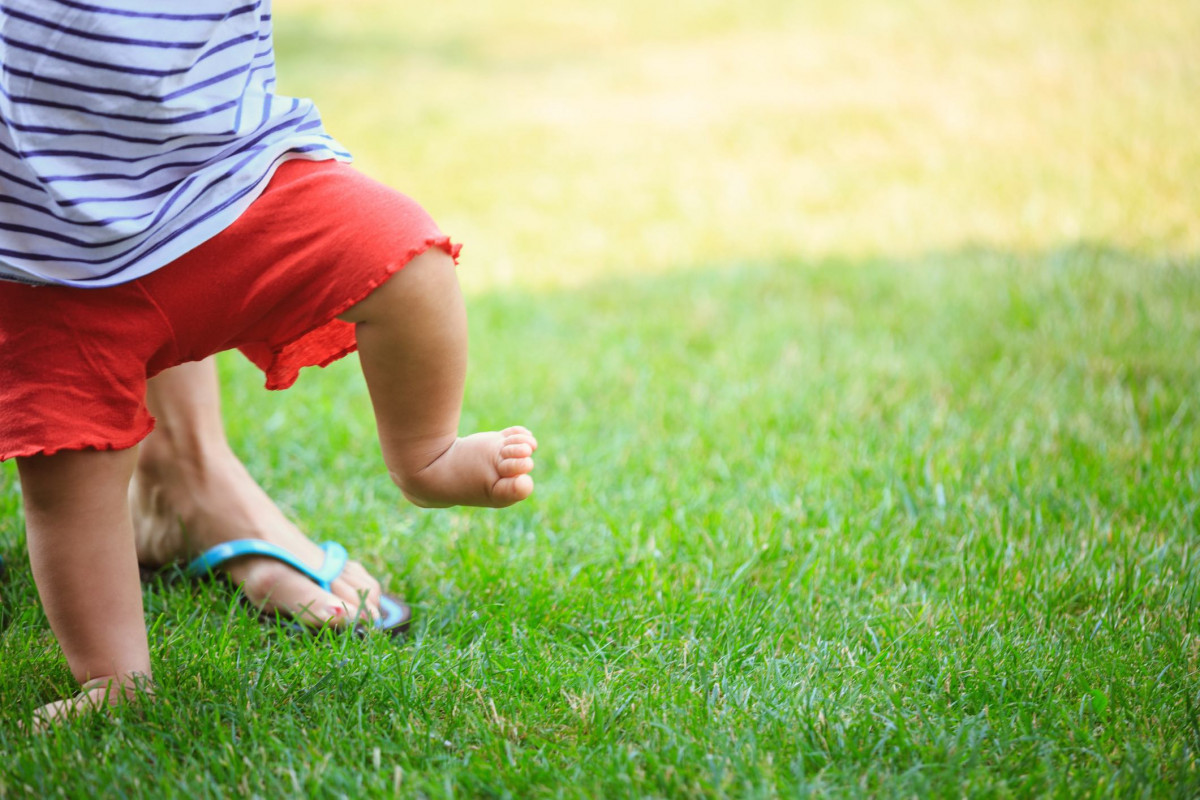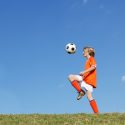
From Crawling to Walking
Watching your baby take their first steps is a very exciting time! Every child is different and most will learn to walk in their own time. According to the World Health Organization, 97% of children begin to walk on their own before the age of 16 months, and about 95% will walk within the time frame of 9 to 16 months. Some children may fall outside this expected range and that’s ok. If your child is not walking by 18 months of age, this can be considered delayed.
Your Child’s Development
During their first year, your baby is very busy learning many new skills. They will learn to sit, roll over and often crawl before moving on to pulling themselves up and standing at about 9 to 10 months. After this, at about 11 months, they’ll start to cruise, moving from one piece of furniture to the next for support and they may even be able to let go and stand without holding on. All of these steps help your baby to develop the coordination, strength and balance to enable them to take their first few steps.
When children are learning to walk, their normal walking pattern is not the same as an adult’s. Children tend to walk with a wide-based stance and take short and fast steps. Walking heel first begins to develop at around 15 to 18 months old and around this time you will start to see a reciprocal arm swing. You won’t see an adult-like walking pattern until around the age of 8 years.
Some common variations you may see in the early years of your child walking include:
-
- In-toeing walking: this is often due to the alignment of your child’s hips
- Internal tibial torsion: where the knees point forwards and the feet point in
- Bowlegs (genu varus) or knock knees (genu valgus)
- Flat feet: this is because there is a fat pad in babies in the midfoot which hides the developing arch
Most of these variations tend to resolve by 7-8 years of age.
How can I help my baby to walk?
The best way to help your baby to walk is to give them plenty of opportunities to practice! When babies are ready, they will start to try to pull themselves up to stand and start holding onto furniture to walk. Little things that you can try include letting them walk in front of you whilst you hold their hands. Try letting go of one hand to experiment with balance. You can also get your baby to try walking along pushing a small trolley. Offer lots of encouragement and praise!
We often get asked, should I buy a walker? Our answer to this is no. Walkers, as well as asbouncers and elliptical seats, aren’t a good idea because they don’t hold your baby’s body in the correct position to enable them to walk on their own. In fact, these devices may even delay walking and contribute to toe walking if they’re used too often. Your baby is much better off on the floor or in a playpen.
Shoes
It is better to hold off on introducing baby shoes until your baby is walking around outside or on rough or cold surfaces. It is important to give your baby plenty of barefoot time as this helps to improve balance and coordination and also helps the muscles of the feet to get stronger.
What to do if I’m concerned about my baby’s walking?
There are many factors that can affect gross motor milestones such as independent walking.
If you are concerned about your child’s development seek help if:
-
- you are concerned that your child is delayed in their walking
- your child is not walking independently by the age of 18 months
- normal variations such as (in-toeing gait) persist beyond the expected age range
- they are walking in an uneven or asymmetric pattern
- your child has pain and functional limitation
A physiotherapist can assist in the assessment of your child and can provide an exercise program to help your child achieve their gross motor milestones.
Our Paediatrics Team works predominantly out of our Westmead rooms and can be contacted on 9633 1035.
References:
- Smith, T., Eikeseth, S., & Lande, H. (2006). The Vineland Adaptive Behavior Scale in a sample of Norwegian second-grade children: A preliminary study. Tidsskrift for Norsk Psykologforening, 43, 2–
- Lerner, R. M. (1998). Theories of human development: Contemporary perspectives. Handbook of child psychology: Vol 1.
- WHO Multicentre Growth Reference Study Group. WHO Motor Development Study: windows of achievement for six gross motor development milestones. Acta Paediatr Suppl. 2006;95(S450):86–95
- Johnson A, Goddard O, Ashurst H. Is late walking a marker of morbidity? Steering Committee, Oxford Region Child Development Project. Arch Dis Child. 1990;65(5):486–488pmid:1694070
- Kanner L. Autistic disturbances of affective contact. Nervous Child. 1943;2:217–250
- Angulo-Barroso RM, Schapiro L, Liang W, et al. Motor development in 9-month-old infants in relation to cultural differences and iron status. Dev Psychobiol. 2011;53(2):196–210pmid:21298634
- Hreidarsson SJ, Shapiro BK, Capute AJ. Age of walking in the cognitively impaired. Clin Pediatr (Phila). 1983;22(4):248–250pmid:6825371
- H. Chang, S.H. Wang, C.L. Kuo, H.C. Shen, Y.W. Hong, L.C. Lin
- Prevalence of flexible flatfoot in Taiwanese school-aged children in relation to obesity, gender, and age Eur J Pediatr, 169 (4) (2010), pp. 447–452








